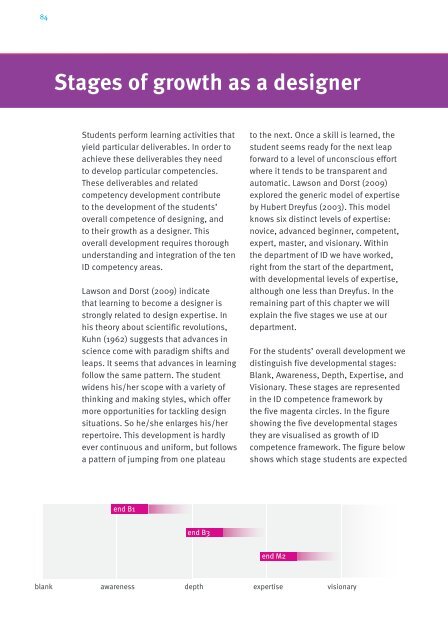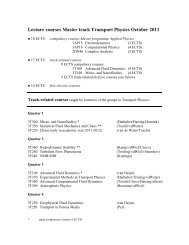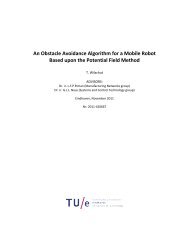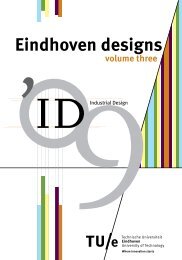Education guide 'Eindhoven designs' - Technische Universiteit ...
Education guide 'Eindhoven designs' - Technische Universiteit ...
Education guide 'Eindhoven designs' - Technische Universiteit ...
You also want an ePaper? Increase the reach of your titles
YUMPU automatically turns print PDFs into web optimized ePapers that Google loves.
84<br />
Stages of growth as a designer<br />
Students perform learning activities that<br />
yield particular deliverables. In order to<br />
achieve these deliverables they need<br />
to develop particular competencies.<br />
These deliverables and related<br />
competency development contribute<br />
to the development of the students’<br />
overall competence of designing, and<br />
to their growth as a designer. This<br />
overall development requires thorough<br />
understanding and integration of the ten<br />
ID competency areas.<br />
Lawson and Dorst (2009) indicate<br />
that learning to become a designer is<br />
strongly related to design expertise. In<br />
his theory about scientific revolutions,<br />
Kuhn (1962) suggests that advances in<br />
science come with paradigm shifts and<br />
leaps. It seems that advances in learning<br />
follow the same pattern. The student<br />
widens his/her scope with a variety of<br />
thinking and making styles, which offer<br />
more opportunities for tackling design<br />
situations. So he/she enlarges his/her<br />
repertoire. This development is hardly<br />
ever continuous and uniform, but follows<br />
a pattern of jumping from one plateau<br />
to the next. Once a skill is learned, the<br />
student seems ready for the next leap<br />
forward to a level of unconscious effort<br />
where it tends to be transparent and<br />
automatic. Lawson and Dorst (2009)<br />
explored the generic model of expertise<br />
by Hubert Dreyfus (2003). This model<br />
knows six distinct levels of expertise:<br />
novice, advanced beginner, competent,<br />
expert, master, and visionary. Within<br />
the department of ID we have worked,<br />
right from the start of the department,<br />
with developmental levels of expertise,<br />
although one less than Dreyfus. In the<br />
remaining part of this chapter we will<br />
explain the five stages we use at our<br />
department.<br />
For the students’ overall development we<br />
distinguish five developmental stages:<br />
Blank, Awareness, Depth, Expertise, and<br />
Visionary. These stages are represented<br />
in the ID competence framework by<br />
the five magenta circles. In the figure<br />
showing the five developmental stages<br />
they are visualised as growth of ID<br />
competence framework. The figure below<br />
shows which stage students are expected<br />
end B1<br />
end B3<br />
end M2<br />
blank awareness depth expertise visionary

















